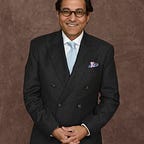Dr. Riyaz Hassanali Explains Fat Grafting and Transplant
Fat grafting, also referred to as fat injection is a popular reconstruction technique. The goal is to remove unwanted fat from one area of the body and use it to increase the size of another. Although a relatively minor procedure, any form of cosmetic enhancement is a significant decision and individuals should have a comprehensive understanding of the process.
Dr. Riyaz Hassanali is a board-certified dermatologist and cosmetic surgeon that has served Western New York locally, along with many international patients from across the globe. He takes the time to discuss the various advantages of fat grafting.
What is Fat Grafting?
Fat grafting is the surgical process by which unwanted fat is transferred from one area of the body such as the abdomen or thighs and is used to smooth or increase the size of another area such as the breasts or face. Three of the most popular fat grafts include facial fat grafts, breast augmentation, and in buttock augmentations.
Grafts are generally taken from areas where the patient is comfortable enough in losing some excess fat or where fat removal would allow for a more uniform look. It is imperative that a doctor also assess a viable donor area.
Dr. Riyaz Hassanali has read through multiple studies that have demonstrated no significant difference in cell viability of the adipose tissue from different donor sites, and that grafts from the abdomen, flank, and thigh have all done well in helping provide cells for injection. During a consultation appointment, the patient and doctor can discuss what would work best in terms of donor sites.
Fat grafting consists of three primary steps which include: harvesting, purification, and injection. After agreeing on a donor site during the consultation, the physician will use a local anesthetic to numb the area and make a small incision. Most commonly, a syringe attached to a cannula will be inserted to remove the fat cells, a procedure also known as liposuction. Once retrieved, the fat is then purified usually through the use of a centrifuge to separate out the fat from impurities, and then transferred to small syringes and prepared to be injected to the recipient site. Lastly, a needle is used to deposit the donor fat into the recipient site, where the doctor may inject several times in different areas, massaging the fat into place helping contour and settle the fat. Patients may undergo this procedure multiple times to achieve their desired look.
Advantages
Since the graft is autologous (coming from your own body) there is a decreased chance of allergic reactions or rejections, that is seen with dermal injectable fillers.
Additionally, multiple studies have shown that natural fat transfer is a safer alternative to dermal fillers and provide patients with a long-lasting natural look. For many individuals, fat grafts act as a fairly non-invasive cosmetic procedure helping them look and feel their best without having to undergo more invasive surgeries, such as full breast implants or facial lifts.
Dr. Hassanali claims that fat grafting is also an emerging breast reconstruction technique for those who have undergone a mastectomy. He claims that it is a safe an effective alternative for individuals have lost a significant amount of breast tissue.
Disadvantages
A few factors patients should consider when it comes to fat grafts is that the procedure itself can take longer than dermal fillers, as fat grafting requires harvesting and purification. Similarly, fat grafting is typically more expensive than dermal fillers, but will last much longer. For patients wanting immediate results, fat grafting may not be the best option as multiple sessions are often needed to achieve desired results, especially if doing an augmentation of breast or buttocks.
However, according to Dr. Riyaz Hassanali, the benefits of grafting significantly outweigh potential disadvantages but urges individuals to first perform extensive research to ensure the procedure is right for them.
